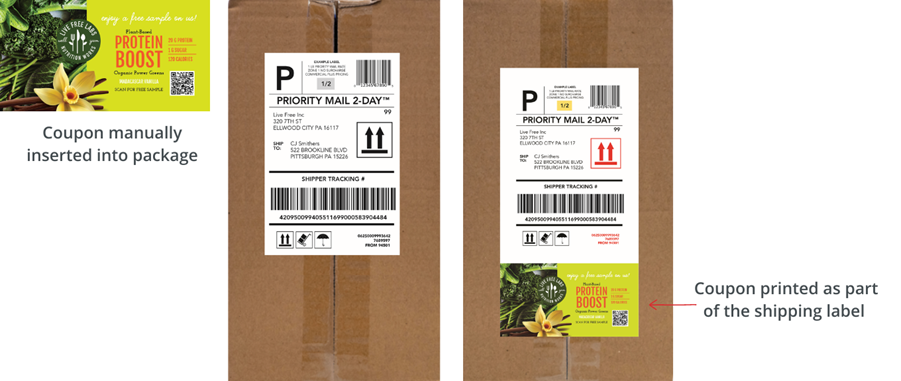Wybierz swoją lokalizację i język, aby korzystać z najlepiej przystosowanej strony internetowej
Wybierz swoją lokalizację i język, aby korzystać z najlepiej przystosowanej strony internetowej

In today’s blog, TEKLYNX interviewed Mark Middendorf, Epson’s Go-To-Market Product Manager for Epson’s ColorWorks inkjet label printers, to learn how businesses are leveraging color on labels in new and creative ways. Read this blog to hear about Middendorf’s perspectives on trends of on-demand color labeling, benefits of color, and insights on how manufacturers are incorporating color on labels to drive more revenue.
Learn about the powerful combination of TEKLYNX and Epson
Jenna Wagner (JW), TEKLYNX: What trends are you seeing relative to the use of on-demand color labeling within manufacturing?
Mark Middendorf (MM), Epson: Businesses who produce a broad mix of SKUs, or those who produce low to moderate volumes per SKU, are increasingly searching for ways to avoid the high costs, risks, and inventory challenges associated with procuring pre-printed labels.
Costs and lead times for pre-printed labels (most especially for smaller volume runs) have risen significantly over the past few years, and this has negatively impacted operating costs and the ability to quickly adjust to shifts in demand.
JW: What benefits are most common with printing on-demand color labels in a manufacturing environment?
MM: On-demand color labeling empowers businesses to avoid being held hostage by unacceptable lead times, minimum order quantities, and rising label costs by affordably printing high-resolution color labels in-house when and where needed. In addition, businesses are equipped to more rapidly generate new label designs or modify existing ones, and thereby accelerate their ability to adapt to product, certification, or market driven changes.
JW: What new and creative approaches are you seeing for how manufacturers are implementing on-demand color labeling solutions?
MM: Automation is becoming more popular amongst manufacturers who are looking to level-up their labeling processes. Made possible by the GPIO interface on the Epson C6000 series, the power of automation is unleashed by integrating printers with either a typical print & apply applicator or a robot such as the Epson VT6L. In addition, the integration of a color label printer with a custom die-cut finisher can be a game changer for businesses of any size who are looking for an affordable way to create custom die-cut labels on-demand at a per label cost that is typically far below that of procuring pre-printed custom die-cut labels.
JW: Any type of labels gaining more popularity in leveraging color that may not be as common?
MM: In addition to the benefits of inkjet vs. thermal relative to ultra-consistent print quality and less required user intervention, in other words how Epson ColorWorks printers employ a permanent printhead design with nozzle verification technology, the ability to generate shipping labels with a color-capable device can turn a shipping label into a potential revenue generator by way of incorporating full color ads at the bottom of the label. In addition, other color elements can also be incorporated such as color logos or highlights to signify expedited shipments, etc.

JW: What advice do you have for manufacturers who are interested in on-demand color labeling but are concerned with the ease of deployment within their environment?
MM: A capable and easy to use label design utility, such as TEKLYNX, can greatly simplify the task of replacing existing thermal printers or deploying net new devices with industrial grade color label printers. The reason for this is label design utilities like TEKLYNX contain on-board native print drivers for printers such as the Epson ColorWorks lineup for optimized printing and rendering color images for label printing. TEKLYNX label design utilities also provide an easy-to-use interface for adding color to existing labels or creating new color labels while incorporating variable data as needed.
JW: Any customer testimonials or use cases that help support this topic/content?
MM: Yes. We have a case study highlighting how Natural Beauty Growers is benefiting from their deployment of a TEKLYNX + Epson ColorWorks solution to produce high-quality color labels on-demand. They purchased an Epson ColorWorks C7500 to meet new labeling requirements put in place by their customer and were looking for software to support WYSIWYG (What You See Is What You Get) color label printing. They looked at all the top barcode labeling software providers but ultimately chose TEKLYNX. They upgraded their previous labeling environment with zero downtime and are now utilizing on-demand color label printing. TEKLYNX does a great job with rendering color and printing labels that have graphical images. Their drivers are designed to take full advantage of the high-resolution capability of the ColorWorks printers to enable the highest quality labels possible.
JW: What should manufacturers look for when buying a color label printer?
MM: Low operating cost (no costly printheads to replace), industrial grade, embedded print drivers within label design utility, BS5609 Certification for extreme label durability, peel-and-present functionality to avoid manually peeling every label, GPIO for interfacing with robots or finishing equipment, and print speed.
JW: How should a company look at cost to benefit comparisons between color inkjet printers and traditional thermal transfer printers?
MM: They should consider all the following:
JW: If someone wants Epson Colorworks label printers, how do they get your product?
MM: Epson works closely with industry-leading color label partners to ensure our customers can get the ideal solution for their needs. To purchase an Epson ColorWorks label printer, or to learn more, contact one of our authorized Epson partners or reach out to us on our website.
The power of on-demand color labeling with TEKLYNX & Epson ColorWorks:
Color labels can also help provide additional levels of communication by enabling the addition of bold safety warnings to catch attention and drawing the eye to critical information.
If you are required to have color on your labels by industry or customer labeling regulations or choosing to add color for marketing and promotions, on-demand color labeling increases worker and consumer safety and efficiency, plus can help draw more attention to your product labels and drive additional revenue. Whether you are looking to start small or evaluate color on your labels at a large scale, let's chat. Or you can start designing and printing on-demand color labels today with a free 30-day trial of CODESOFT barcode label design software.
Learn more or request more information about the combined solutions of Epson and TEKLYNX.
Mark has over 22 years of experience in the industrial print space serving in Global Product Management, Sales, and Marketing roles during his tenure at IBM Printing Systems, a major IBM Print Distributor, Printronix, and currently Epson.
You’ve created a great product and made it to store shelves! Your hard work is starting to pay off, and now it’s time to make sure you’re setting your product up for the commercial success it deserves. Designing an attractive and professional product label is the best way to make sure your product stands out, and images are a great way to do just that.
READ MORE
A constant theme in today's manufacturing world is the need for automation.
READ MORE
Color labeling is not a new phenomenon. Manufacturers have long understood the value of incorporating color onto their labels. From branding and marketing to product identification, the opportunities color can provide are limitless.
READ MORE© Copyright 2025 TEKLYNX CORPORATION SAS. Wszystkie prawa zastrzeżone.
What do you think? Leave us a comment.
Comments will be reviewed and are subject to TEKLYNX’ comment policy. Your email address will not be published publicly.